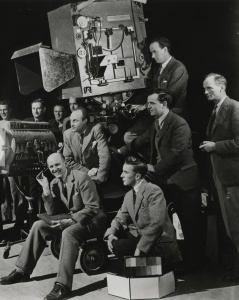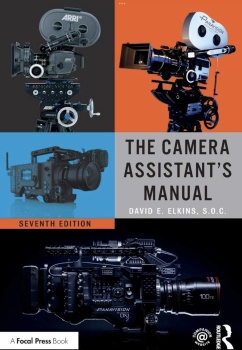Canon has unveiled its topflight mirrorless camera, the EOS R3. Combining assets from the EOS R5 and the flagship EOS-1D X Mark III DSLR, the R3 is a high-performance body built for speedy shooting, featuring fast and precise focusing, and sporting a robust, professional-grade body.
It's the first 3-Series camera since the film era and introduces a wealth of new tech to Canon's mirrorless system, including an all-new stacked sensor, Eye Control AF, and a built-in vertical grip.
Announced alongside the new EOS R3 camera body, Canon is also expanding its lens lineup with the introduction of the RF 100-400mm f/5.6-8 IS USM and RF 16mm f/2.8 STM lenses. Relatively sleek and lightweight, these two lenses open up the RF lineup with more accessible choices at the wide and telephoto ends of the spectrum.
The EOS R3 is Canon's top-tier mirrorless body and currently is positioned between the high-resolution EOS R5 mirrorless body and the professional-grade EOS-1D X Mark III. The R3 combines the best of these two models, taking the speed, reliability, and physical characteristics of the flagship 1D X Mark III along with the technological advancements, mirrorless design, and multimedia prowess of the R5.
Sensor and Processor
While looking like a mixture of these two cameras, the EOS R3 does stand on its own with a variety of unique technologies, including a brand-new 24.1MP back-illuminated stacked CMOS sensor and an updated DIGIC X image processor. The stacked configuration of the sensor promotes faster readout speeds and reduces rolling shutter distortion to cater better to working with fast-moving subjects, and the BSI design is more efficient when gathering light, leading to cleaner image quality with reduced noise at higher sensitivities.
Another key element of this new sensor is its optimization for use with an electronic shutter function; top shooting speeds of 30 fps are possible with a 150-frame buffer, a top shutter speed of 1/64,000 second is available, and flash sync at 1/180 second is even possible. If working with a mechanical shutter, continuous shooting at 12 fps is available with a buffer of more than 1,000 frames, and flash sync is possible up to 1/250 second. In most cases, the electronic shutter will be the go-to function, and can remain a silent shooting option, or you can program an audible noise to accompany each shutter click to make it easier for subjects to recognize when a photo has been taken.
Complementing the updated sensor is a revised DIGIC X image processor, which helps to orchestrate many of the performance-oriented processes of the sensor, ranging from the fast continuous shooting to the AF, image stabilization, and video-recording capabilities. The sensor's capabilities also go on to boost the sensitivity range to ISO 100-102400 for working in a wide variety of lighting conditions.
In terms of video, the EOS R3 holds its own in the mirrorless realm with 6K 60p raw 12-bit recording and uncropped 4K 120p recording. The 6K and 5.6K recording areas can also be used for oversampled DCI and UHD 4K shooting with improved sharpness, reduced moiré, and lower noise. All 4K recording modes can be used with 60p, 30p, and 24p frame rates, and there is also a choice of HDR PQ and Canon Log 3 settings, depending on post-production workflow needs. Unlimited recording times are possible, too, and the R3 features mic and headphone ports, as well as a micro-HDMI Type-D port for clean output to an external recorder.
Autofocus
In addition to continuous shooting and readout speed improvements, the new sensor also lends itself to an improved Dual Pixel CMOS AF II system, which now features 1,053 selectable phase-detection points along with automatic AF zones and enhanced subject detection and tracking. The AF system can now intelligently recognize eyes, faces, heads (including helmets), animals, and vehicles, and tracking will automatically lock onto these subjects and maintain sharp focus throughout burst captures.
Something new to EOS digital cameras in general, Canon is also reintroducing Eye Control AF with the R3. This feature was a popular one dating back to the EOS-3 film camera days and has now been refined and tuned to work in conjunction with modern-day AF systems. This feature essentially allows you to use your eye to control where the initial focus point is, and then the camera will take control using subject tracking to keep the subject in focus. This feature will require you to "register" your eyes, and is activated simply by looking through the EVF, but will give shooters an even more intuitive means than a joystick for finding the perfect focus point prior to burst shooting.
One final point of the AF system worth noting is that it is sensitive down to -7.5 EV, meaning accurate and responsive AF performance is possible even in nighttime conditions. Coupled with a silent electronic shutter, quick burst shooting, and IBIS, this makes this camera stand out in terms of photographing live music performances and other low-light activities.
In-Body Image Stabilization
Not a new feature to Canon, but still one worth pointing out, is the In-Body Image Stabilizer (IBIS) that helps correct camera shake when shooting handheld in difficult lighting conditions or with longer lenses. This 5-axis system in the R3 is the same one used in the EOS R5 and R6 and can be used in conjunction with lenses featuring optical image stabilization to compensate for up to 8 stops of camera shake, depending on the specific lens in use.
Body Design
The new sensor and improved AF are great, of course, but among the most dramatic changes the R3 brings is a wholly new body to Canon's mirrorless lineup. It's the first Canon mirrorless body to sport an integrated vertical grip, which means it has duplicate physical controls for easier shooting in vertical orientation, greater handling comfort all around, and it takes the same large-capacity LP-E19 battery as the EOS-1D X Mark III. Some other similarities to the 1D X Mark III: The R3 has the same dust and drip resistance, with fully sealed buttons, dials, and terminals; it features wired LAN connectivity via an Ethernet port along with standard Wi-Fi and Bluetooth wireless connectivity; and there is an integrated GPS module for seamless location tagging.
The revised body also houses the impressive 5.76m-dot OLED electronic viewfinder and vari-angle touchscreen LCD. The EVF is the same high-res model found in the R5 and is a bright, clear means for eye-level viewing. This viewfinder is aided by the fast readout speeds of the stacked sensor, too, offers blackout-free viewing when shooting with an electronic shutter, and supports a 120-fps refresh rate for realistic motion portrayal. Conversely, the 3.2" 4.15m-dot vari-angle LCD is perfect for working from high, low, and front-facing angles and sports a touchscreen interface for intuitive settings control.
Complementing the updated sensor is a revised DIGIC X image processor, which helps to orchestrate many of the performance-oriented processes of the sensor, ranging from the fast continuous shooting to the AF, image stabilization, and video-recording capabilities. The sensor's capabilities also go on to boost the sensitivity range to ISO 100-102400 for working in a wide variety of lighting conditions.
In terms of video, the EOS R3 holds its own in the mirrorless realm with 6K 60p raw 12-bit recording and uncropped 4K 120p recording. The 6K and 5.6K recording areas can also be used for oversampled DCI and UHD 4K shooting with improved sharpness, reduced moiré, and lower noise. All 4K recording modes can be used with 60p, 30p, and 24p frame rates, and there is also a choice of HDR PQ and Canon Log 3 settings, depending on post-production workflow needs. Unlimited recording times are possible, too, and the R3 features mic and headphone ports, as well as a micro-HDMI Type-D port for clean output to an external recorder.
Autofocus
In addition to continuous shooting and readout speed improvements, the new sensor also lends itself to an improved Dual Pixel CMOS AF II system, which now features 1,053 selectable phase-detection points along with automatic AF zones and enhanced subject detection and tracking. The AF system can now intelligently recognize eyes, faces, heads (including helmets), animals, and vehicles, and tracking will automatically lock onto these subjects and maintain sharp focus throughout burst captures.
Something new to EOS digital cameras in general, Canon is also reintroducing Eye Control AF with the R3. This feature was a popular one dating back to the EOS-3 film camera days and has now been refined and tuned to work in conjunction with modern-day AF systems.
This feature essentially allows you to use your eye to control where the initial focus point is, and then the camera will take control using subject tracking to keep the subject in focus. This feature will require you to "register" your eyes, and is activated simply by looking through the EVF, but will give shooters an even more intuitive means than a joystick for finding the perfect focus point prior to burst shooting.
One final point of the AF system worth noting is that it is sensitive down to -7.5 EV, meaning accurate and responsive AF performance is possible even in nighttime conditions. Coupled with a silent electronic shutter, quick burst shooting, and IBIS, this makes this camera stand out in terms of photographing live music performances and other low-light activities.
In-Body Image Stabilization
Not a new feature to Canon, but still one worth pointing out, is the In-Body Image Stabilizer (IBIS) that helps correct camera shake when shooting handheld in difficult lighting conditions or with longer lenses. This 5-axis system in the R3 is the same one used in the EOS R5 and R6 and can be used in conjunction with lenses featuring optical image stabilization to compensate for up to 8 stops of camera shake, depending on the specific lens in use.
As you'd expect from a professional-grade camera, the R3 has dual memory card slots—one CFexpress Type B slot and one SD UHS-II slot—for file-saving flexibility. The CFexpress slot should be prioritized for 6K recordings and fast continuous shooting, but the SD slot is a convenient alternative for backups or less speed-critical shooting.
Finally, one final new bit of the tech the R3 is bringing to light is the Multi-Function Shoe. This next-gen take on a hot shoe essentially adds a row of pins at the front of the shoe for more intelligent accessory performance and functionality. To go along with the Multi-Function Shoe, Canon is also launching four additional accessories that take advantage of this new design.
The ST-E10 Speedlite Transmitter is a compact, lightweight transmitter that controls all five independent groups across up to 15 Speedlites simply by pressing the menu button on the transmitter and then adjusting settings on the camera's LCD. This transmitter is 30% smaller and 50% lighter than the ST-E3-RT II and, since it is digital and is compatible with the Multi-Function Shoe, it is battery-free and uses the camera's own power.
The DM-E1D Stereo Microphone is a shoe-mounted external mic that uses the Multi-Function interface for power and for digitally connecting to the camera, requiring no cabling for sync. It has three directional modes depending on recording needs, including a Shotgun mode for focused recording and 90° and 120° Stereo modes for wide-area recording.
The AD-P1 Smartphone Link Adapter is compatible with Android smartphones and uses the mobile device's data connection and a Mobile File transfer app for seamless and wireless photo, video, and voice memo transferring to FTP/FTPS/SFTP servers directly from the camera.
CANON EOS R3. Price: $5.999 (body only)
Courtesy of B&H
































































